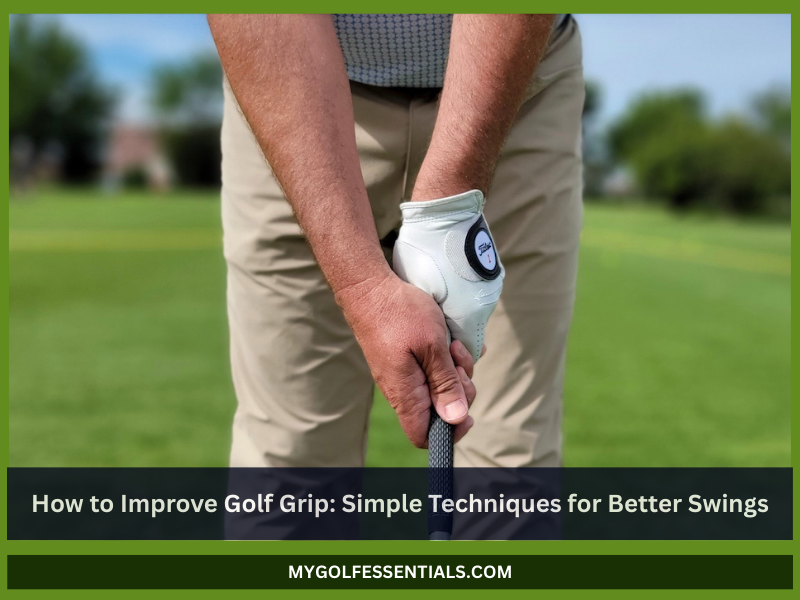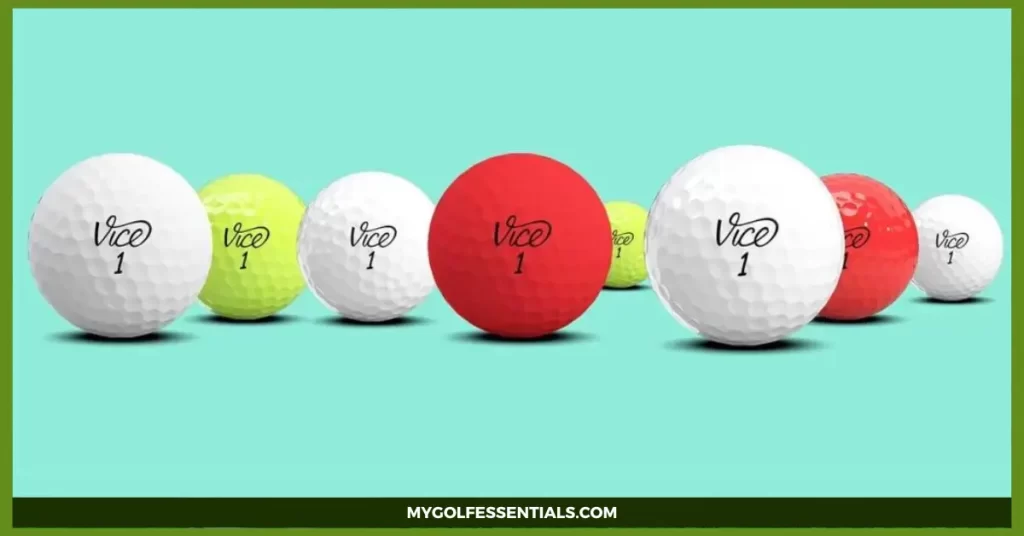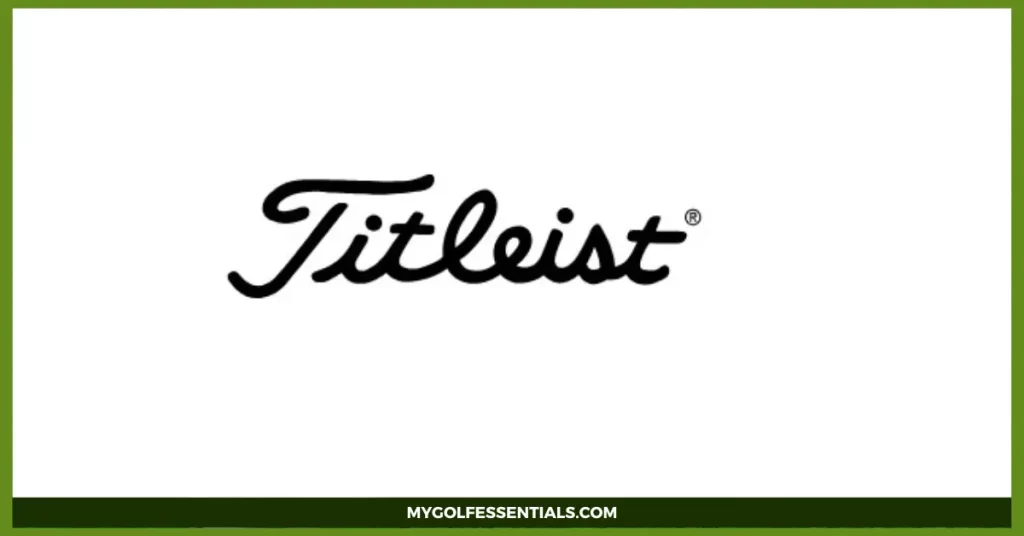
What’s the one thing that can make or break your golf swing before you even move the club? Your grip. If you’ve ever wondered how to improve golf grip and gain better control, power, and consistency in your game, you’re in the right place.
Many golfers spend hours working on their swing mechanics but forget the most important connection they have to the club, how they hold it.
In this article, you’ll learn simple, practical tips to fix your grip without overthinking it. We’ll cover the proper golf grip, show you the correct golf grip technique, and explain the difference between strong, weak, and neutral grips.
You’ll also find advice on golf grip pressure, how to improve hand placement, and how to avoid common grip mistakes. Whether you’re a beginner or looking to fine-tune your swing, these grip tips will help you hit the ball cleaner and more consistently.
Why Your Golf Grip Matters
Before we get into how to improve golf grip, let’s find out why it’s so important in the first place. Your grip is the only connection between your body and the club. That’s why knowing how to improve golf grip is crucial. Without a proper grip, your swing mechanics won’t matter. Even perfect posture can’t fix a bad grip.
A proper golf grip controls the clubface during your swing. It influences where the ball goes, left, right, or straight. In addition, it affects your power, timing, and consistency. Gripping the club wrong can lead to hooks, slices, and missed shots.
Here’s what a correct golf grip technique helps with:
- Better clubface control through impact
- Consistent swing path and ball flight
- Improved distance and accuracy
- Fewer mishits and shot corrections
However, the benefits go beyond shot quality. A correct grip also reduces wrist strain and helps prevent injury. For beginners and pros alike, adjusting the grip is one of the fastest ways to see real results.
So if you’re serious about your swing, it’s time to start with your hands. Ready to fix your grip? Let’s break it down step by step.
Step-by-Step Guide on How to Improve Golf Grip
Knowing how to improve golf grip begins with placing your hands correctly on the club. This step can feel awkward at first but it makes all the difference.
Lead Hand Placement (Top Hand)
Your lead hand (left for right-handed golfers) controls the face of the club.
- Hold the club diagonally across your fingers, not in the palm.
- Wrap your fingers around and place your thumb slightly right of center.
- Make sure the “V” between your thumb and index finger points toward your trail shoulder.
This gives you better wrist control and helps maintain a square clubface.
Trail Hand Placement (Bottom Hand)
The trail hand supports the swing and adds power.
- Lay your trail hand over the lead thumb, covering it lightly.
- The “V” formed here should also point toward your trail shoulder.
- Keep your grip firm but not tight, more on golf grip pressure later.
Common Grip Styles to Try
Each golfer has a preferred grip style. Choose one that fits your hand size and comfort.
1. Overlap Grip
- Pinky finger of the trail hand rests between the index and middle fingers of the lead hand.
- Popular with players who have larger hands.
2. Interlock Grip
- Pinky finger of the trail hand interlocks with the index finger of the lead hand.
- Best for players with smaller hands or weaker grip strength.
3. Ten-Finger (Baseball) Grip
- All ten fingers touch the club, like holding a baseball bat.
- Great for beginners or golfers with joint pain.
Try each one during practice to find the best grip for golf swing based on your swing style and hand placement comfort.
Once you choose a grip style, how tight should you hold the club? Up next, we’ll talk about golf grip pressure, a key factor most golfers get wrong.
Finding the Right Grip Pressure
One of the easiest ways to improve your swing is by fixing your golf grip pressure. When golfers ask how to improve golf grip, they often overlook this detail. However, grip pressure can affect everything from swing speed to ball flight.
Gripping the club too tightly causes tension in your hands and forearms. This tension restricts your wrist movement and slows down your swing. In most cases, it leads to poor contact and inconsistent shots.
On the flip side, a grip that’s too loose causes the club to shift during the swing. You lose control at impact, which often results in mis-hits.
Here’s how to find the right grip pressure:
- Hold the club like a tube of toothpaste, firm but gentle.
- Keep your arms relaxed throughout the swing.
- Avoid squeezing the club tighter during pressure shots.
- Monitor your tension level regularly, especially after bad shots.
A relaxed grip promotes smoother movement, better timing, and more consistent ball contact. Many tour players practice swinging with their eyes closed just to feel their pressure level.
Now that you know how to hold the club, let’s explore how grip strength affects your shot direction and clubface control.
Understanding Grip Strength: Strong vs. Weak vs. Neutral
Grip strength doesn’t refer to how hard you grip the club. Instead, it describes the position of your hands on the handle. Understanding this concept is key when learning how to improve golf grip for better ball flight and accuracy.
Let’s break down the three grip strengths:
Strong Grip
- Your lead hand rotates away from the target.
- You’ll see 3 or more knuckles on your lead hand.
- The “V” between thumb and index points right of your shoulder.
- Promotes a closed clubface and often leads to draws or hooks.
This grip can help if you struggle with slicing the ball. However, it may create timing issues if overdone.
Weak Grip
- Your lead hand rotates toward the target.
- You’ll see fewer knuckles,usually one or none.
- The “V” points closer to your lead shoulder.
- Promotes an open clubface, which causes fades or slices.
Weak grips offer control but can rob you of power. They are best for players who tend to hook the ball too often.
Neutral Grip
- Both hand “V” shapes point toward your trail shoulder.
- The clubface stays square at impact.
- Creates a balanced release and promotes straighter shots.
The neutral golf grip is ideal for most players, especially beginners. It offers a mix of control, power, and consistency.
Choosing the right grip strength depends on your swing style, shot shape, and comfort. Just like one call debt recovery offers tailored solutions for financial issues, the correct grip strength gives you control over your swing issues.
Common Mistakes to Avoid When Learning How to Improve Golf Grip
Even when you know how to improve golf grip, small mistakes can creep in and hurt your performance. These common errors often go unnoticed but can lead to inconsistent shots and frustrating rounds.
One major mistake is gripping the club too much in your palms. When the grip sits deep in your palm, your wrists become less flexible. This leads to poor hinge and limited control through the swing. For a proper golf grip, the club should rest diagonally across your fingers, not your palm.
Another frequent issue is inconsistent hand placement. Shifting your hands slightly each time you address the ball creates subtle changes in face angle and club path. These small differences can produce unexpected hooks, slices, or even topped shots.
Watch out for these other grip mistakes when how to improve golf grip:
- Forgetting to check grip alignment before each swing.
- Letting the lead thumb wrap too far around the handle.
- Not adjusting for glove wear or grip slickness.
Lastly, golfers often ignore grip maintenance. Over time, grips wear out or get slippery, affecting pressure and control. Check your grips regularly and replace them at least once a season or sooner if you play often.
You might have the right grip pressure and hand strength, but if your placement is off, your shots will still suffer.
Tips to Improve Golf Hand Placement
Improving your hand placement is a practical step in mastering how to improve golf grip. Even small tweaks can lead to better clubface control, more solid contact, and improved shot direction.
Start by using visual aids. Marking your glove or grip with a small dot or line can help you place your hands the same way every time. This builds consistency and muscle memory.
Practicing in front of a mirror is another helpful trick. By watching your hand position in real time, you can catch and correct errors before they become habits.
Try these tips to improve hand placement when learning how to improve golf grip:
- Mark your glove with a pen to guide thumb alignment.
- Use a training grip or molded grip aid during practice.
- Check your “V” shapes, they should both point toward your trail shoulder.
- Practice slow-motion swings while focusing only on hand positioning.
In addition, take time during each range session to review and adjust your grip. Set reminders every 10–15 balls to recheck your setup. Small adjustments made consistently lead to lasting improvement.
Exploring Different Golf Grip Styles
When figuring out how to improve golf grip, one size doesn’t fit all. The right golf grip style depends on your hand size, comfort level, and swing control. The goal is to find a grip that feels natural and gives you confidence at address.
There are three main golf grip styles you can experiment with:
Overlap Grip
Also known as the Vardon grip, this style is common among professional golfers.
- The pinky of your trail hand rests in the gap between the index and middle fingers of your lead hand.
- Ideal for players with larger hands or those looking for more wrist control.
Interlock Grip
Here, the pinky finger of your trail hand interlocks with the index finger of your lead hand.
- Offers a tighter connection between hands.
- Best suited for players with smaller hands or limited grip strength.
Ten-Finger (Baseball) Grip
All fingers touch the club, similar to holding a baseball bat.
- Simple and easy for beginners to learn.
- Provides strong leverage but less control for advanced swings.
When choosing a grip style, consider:
- Hand size and strength.
- Wrist flexibility.
- Shot control and personal comfort.
Experiment with all three during your practice sessions. Track your results and comfort level. One style might feel awkward at first, but with time, it could become your secret weapon.
Next, let’s talk about something just as important: how to maintain your golf grip so your progress doesn’t slip away.
Maintaining Your Golf Grip
No matter how well you learn how to improve golf grip, ignoring maintenance can lead to poor performance. Dirty or worn-out grips affect your ability to control the club and apply consistent pressure.
First, get into the habit of inspecting your grips regularly. Look for signs of:
- Cracks or slick areas.
- Hard or shiny patches.
- Loss of tackiness.
Clean your grips every few weeks using mild soap, warm water, and a soft brush. This helps remove dirt, sweat, and oils that reduce grip friction. If you play in humid or wet conditions, you may need to clean them more often.
Grip maintenance checklist:
- Wipe down grips after each round.
- Deep clean every 5–10 rounds.
- Replace grips once or twice a year, depending on usage.
Therefore, by keeping your grips in top shape, you’re reinforcing the foundation of every great swing.
Final Thoughts
Every great shot begins with the way you hold the club. If you’ve ever wondered how to improve golf grip, the answer isn’t in fancy gadgets or complex techniques, it starts with small, consistent changes. Whether you’re adjusting your grip pressure, exploring new grip styles, or simply checking for wear, your hands tell the club what to do.
So, the next time you step onto the course, take a few extra seconds to set your grip right. You’ll feel more in control, swing with more confidence, and notice your ball flight improving, one swing at a time once you learn how to improve golf grip. The grip may seem like a small part of the game, but it can make a big difference when you’re chasing your best golf yet.
Key Points
- Your grip is your only connection to the club, and it plays a major role in swing control and accuracy making it a crucial point when learning how to improve golf grip.
- A proper golf grip allows for a square clubface at impact and more consistent shot results.
- The lead hand should hold the club diagonally across the fingers, with the “V” pointing to the trail shoulder.
- The trail hand should wrap over the lead thumb, with its “V” also pointing toward the trail shoulder.
- Common golf grip styles include the overlap, interlock, and ten-finger grip, each offering different levels of comfort and control.
- Grip pressure should be firm yet relaxed, tight enough for control, loose enough to avoid tension.
- Strong, weak, and neutral grips affect shot shape; a neutral grip often promotes straighter ball flights.
- Avoid mistakes like gripping too much in the palms, inconsistent hand placement, or using worn-out grips.
- Improve hand placement using visual aids like glove markings, mirrors, and consistent practice habits.
- Maintain your grips by cleaning regularly and replacing them when worn to ensure tackiness and performance.
How can I practice improving my golf grip?
Use visual aids, like marking your glove, to ensure consistent hand placement. Practice gripping the club in front of a mirror to monitor hand positions. Regularly review and adjust your grip during practice sessions.
How often should I replace my golf grips?
Regularly inspect grips for wear and replace them as needed. Ensure grips are clean and free from debris to maintain tackiness. Proper grip maintenance contributes to consistent performance.
Can changing my grip fix a slice or hook?
Yes, adjusting your grip can influence the clubface angle at impact. A neutral grip often helps in promoting straighter shots, while a strong or weak grip can lead to hooks or slices, respectively.



